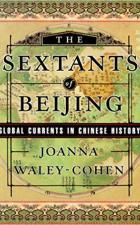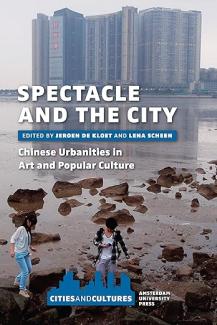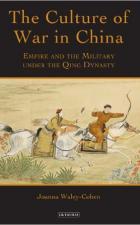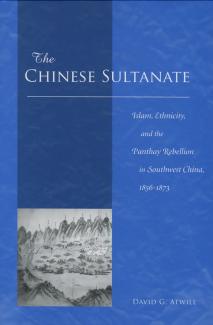
NYU Around the World
Schools
- Arts and Science College of Arts and Science College of Dentistry College of Global Public Health Rory Meyers College of Nursing Courant Institute of Mathematical Sciences Gallatin School of Individualized Study Graduate School of Arts and Science Institute of Fine Arts Institute for the Study of the Ancient World Leonard N. Stern School of Business Liberal Studies Program Robert F. Wagner Graduate School School of Law School of Medicine School of Professional Studies Silver School of Social Work Steinhardt School Tandon School of Engineering Tisch School of the Arts
Publications

Boredom, Shanzhai, and Digitisation in the Time of Creative China
With its emergence as a global power, China aspires to transform from "made in China" to "created in China". Mobilised as a crucial source for solid growth and "soft power," creativity has become part of the new China Dream. This anthology engages with the imperative of creativity by aligning it to three interrelated phenomena: boredom, shanzhai, and digitisation. How does creativity help mitigate boredom? Does boredom incubate creativity? How do shanzhai practices and the omnipresence of fake stuffs challenge notions of the original and authentic? Which spaces for expressions and contestations has China's fast-developing digital world of Weixin, Taobao, Youku and Internet Plus Policy opened up? Are new technologies serving old interests? Essays, dialogues, audio-visual documents and field notes, from thinkers, researchers, practitioners and policy-makers, contribute to explore, examine and problematize what is going on in China now, ultimately to tease out its implication to our understanding of "creativity".

When China Meets the World: Bilingual Business-Finance Cases
“The contest in the Chinese market between Taobao and the American ecommerce giant eBay marked an important milestone in the history of Alibaba’s early development and serves as a classic in business case studies. My thanks to Professor Zhihong Chen for her narration and analysis of this case and for making it the first chapter of the book. Her Chinese-English bilingual presentation makes this case accessible to readers all over the world. It is with great pleasure that I strongly recommend this book.”
— Jack Ma, Founder and former Executive Chairman of Alibaba Group
While presenting classic cases in Chinese business and finance, this book also touches on basic concepts and essential knowledge of business and finance in both Chinese and English. Applications for this book are wide-ranging; the text can be used as part of a university-level introductory business curriculum and MBA programs or in training courses for Chinese and foreign companies to strengthen their business English or business Chinese, etc. The book narrates and discusses important historical moments and critical cases from the business and finance fields that tell the story of when China “met” the world, which was against the grand backdrop of the Reform and Opening-up era. The trials and tribulations wrought by forty years of Reform and Opening-up policies far exceed the scope of this book alone. Nevertheless, the individual cases presented in this book reveal, from various perspectives, key features of the phenomena—as immortalized in the phrase “China changed the world, and the world changed China”—that indelibly shaped the magnificent historical process leading to “China’s encounter with the world.” At the same time, the Chinese and English bilingual expressions presented in this book further serve a diverse readership to enrich their understanding of Chinese language, history, business and culture, among other aspects. For more information, please click on the following link of the publisher's page:
https://www.oupchina.com.hk/en/general-interest/humanities/business-finance

Islamic Shangri-La: Inter-Asian Relations and Lhasa’s Muslim Communities, 1600 to 1960
A free ebook version of this title is available through Luminos, University of California Press’s Open Access publishing program for monographs. Visit www.luminosoa.org to learn more.
Islamic Shangri-La transports readers to the heart of the Himalayas as it traces the rise of the Tibetan Muslim community from the 17th century to the present. Radically altering popular interpretations that have portrayed Tibet as isolated and monolithically Buddhist, David Atwill's vibrant account demonstrates how truly cosmopolitan Tibetan society was by highlighting the hybrid influences and internal diversity of Tibet. In its exploration of the Tibetan Muslim experience, this book presents an unparalleled perspective of Tibet's standing during the rise of post–World War II Asia.

The Sextants of Beijing: Global Currents in Chinese History
The myth that Chinese civilization is monolithic, unchanging and perenially cut off from the rest of the world has long obscured China's diverse and dynamic history. Drawing on research, NYU Shanghai Provost and professor of history Joanna Waley-Cohen, provides an accessible account of China's fertile relations with other Asian cultures and the West from the days of the Silk Road to the present. Waley-Cohen argues that well before the arrival of Europeans in East Asia, China was integrated into a wide-ranging network of commercial, intellectual, religious and cultural contacts. Among the most influential features of this traffic was the spread of Buddhism from India to China. Later, Catholic missionaries would interpret the Chinese resistance to their religion as evidence of an arrogant complacency, just as Western emissaries would interpret China's objections to trade on Western terms. Waley-Cohen argues that throughout history, in trade, religion, ideology or technology, China has interacted with the rest of the world, so long as the rules of engagement were not externally imposed. She shows the reader a cosmopolitan China, a civilization actively engaged with other cultures and societies.
(Description courtesy of publisher.)

Stalk Divination: A Newly Discovered Alternative to the I Ching
This book presents for the first time a full translation and analysis of a newly discovered bamboo divination manual from the fourth century BCE China, called the Stalk Divination Method (Shifa). It was used as an alternative to the better-known Zhouyi (popularly known as the I-Ching). The Shifa manual presents a competing method of interpreting the trigrams, the most basic elements of the distinctive sixty-four hexagrams in the Zhouyi. This newly discovered method looks at the combination of four trigrams as a fluid, changeable pattern or unit reflective of different circumstances in an elite man's life. Unlike the Zhouyi, this new manual provides case studies that explain how to read the trigram patterns for different topics. This method is unprecedented in early China and has left no trace in later Chinese divination traditions. Shifa must be understood then as a competing voice in the centuries before the Zhouyi became the hegemonic standard. The authors of this book have translated this new text and "cracked the code" of its logic. This new divination will change our understanding of Chinese divination and bring new light to Zhouyi studies.

Conceptualizing and Reexamining India-China Connections
This book is a result of the Workshop on Conceptualizing and Reexamining India-China Connections at Fudan University’s International Center for the Studies of Chinese Civilization. In November 2013, over 20 scholars from China and abroad attended the workshop and reflected on previous research of China-India relations and discussed future prospects of topics including history, languages, literature, images, international relations spanning from ancient to modern times.
Tansen Sen is the editor of the book and author of one of the chapters.

Shanghai Literary Imaginings: A City in Transformation (Asian Cities)
Shanghai Literary Imaginings draws on a wide range of methods-including approaches from literary studies, cultural studies, and urban sociology-to analyze the transformation of Shanghai through rapid growth and widespread urban renewal. Lena Scheen explores the literary imaginings of the city, its past, present, and future, in order to understand the effects of that urban transformation on both the psychological state of Shanghai's citizens and their perception of the spaces they inhabit. It is the only book-length study that gives a full overview of literary culture in Shanghai since 1990, critically engaging with Chinese-language scholarship. The book has been praised as “essential reading” (Robin Visser), offering “significant new insights into contemporary Chinese urban culture from a highly innovative methodological perspective” (Michel Hockx) and “bringing to light a large body of work that would otherwise lie buried” (Andrew Field).

Spectacle and the City: Chinese Urbanities in Popular Culture and Art
As China becomes increasingly modern and urban, artists have responded by imagining the Chinese city at the intersections of the social, material, and political realities of modern life. This volume explores how the city-as-spectacle has been visualized and contested in art and popular culture. Featuring essays by an interdisciplinary team of scholars, Spectacle and the City is as broad as the terrain it covers: with essays by an interdisciplinary team of experts on Chinese cities, as well as leading cultural critics, it goes beyond mainland China to include cities with cultural significance, such as Singapore and Hong Kong.

The Culture of War in China: Empire and the Military Under the Qing Dynasty
Was the primary focus of the Qing dynasty really civil rather than military matters? In this ground-breaking book, Joanna Waley-Cohen overturns conventional wisdom to put warfare at the heart of seventeenth and eighteenth century China. She argues that the civil and the military were understood as mutually complementary forces. Emperors underpinned military expansion with a wide-ranging cultural campaign intended to bring military success, and the martial values associated with it, into the mainstream of cultural life. The Culture of War in China is a striking revisionist history that brings new insight into the roots of Chinese nationalism and the modern militarised state.

The Chinese Sultanate: Islam, Ethnicity, and the Panthay Rebellion in Southwest China, 1856-1873
The Muslim-led Panthay Rebellion was one of five mid-nineteenth-century rebellions to threaten the Chinese imperial court. The Chinese Sultanate begins by contrasting the views of Yunnan held by the imperial center with local and indigenous perspectives, in particular looking at the strong ties the Muslim Yunnanese had with Southeast Asia and Tibet. Traditional interpretations of the rebellion there have emphasized the political threat posed by the Muslim Yunnanese, but no prior study has sought to understand the insurrection in its broader muti-ethnic borderland context. At its core, the book delineates the escalating government support of premeditated massacres of the Hui by Han Chinese and offers the first in-depth examination of the seventeen-year-long rule of the Dali Sultanate.

